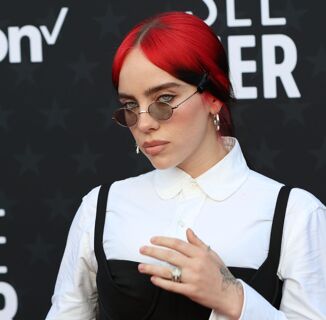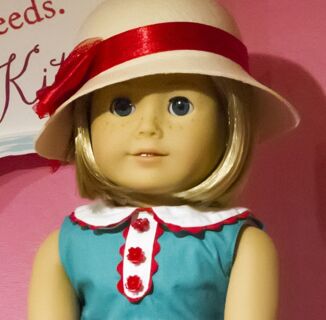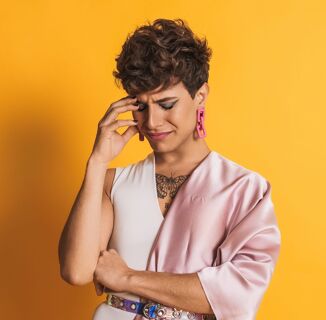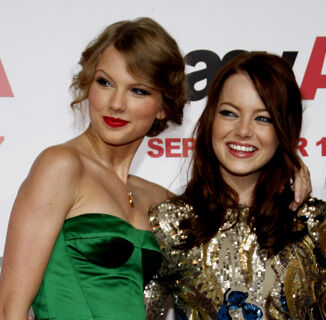Being lesbian is the sexual orientation of women (or women-identifying individuals) who are attracted to other women. Lesbians can experience feelings of love and intimacy with each other in many different ways, such as forming romantic relationships, sharing a household together, or having sex.
The LGBTQ+ community is large and ever-changing, so it may be difficult to understand where you stand on the spectrum and that is totally okay! Sexuality is fluid and ever-changing, so the most important part is letting yourself explore and learn what you feel the most comfortable with.
In this article, we’ll tackle what it means to be a lesbian and what it entails to be a part of this community.
Where does the word Lesbian come from?
Lesbian is derived from the name of the Greek island Lesbos, where the ancient poet, Sappho, was born. While it’s uncertain if Sappho was exclusively attracted to women, her poetry often featured same-sex love interests.
While the word lesbian originally related to anything derived from the island of Lesbos, by 1870, the word lesbian began to refer to erotic relationships between women. Because of Sappho’s historical influence on same-sex love the word sapphic was coined, as a synonym for lesbian.
In 1890, the term lesbian appeared in a medical dictionary to define women loving women. By the 20th century, the word lesbian became homogeneous with the words homosexual, invert, and sapphist.
Other ways to say “Lesbian”
Because identity is personal and different people are comfortable using different terms, there are a variety of ways to say the word lesbian, including:
- Sapphic
- Homosexual
- Gay
- Queer
- Trixic
Over time language evolves and this creates new words derived from a multitude of historical nuances. Labels and terms can also carry connotations, bad or good, which is why one might identify more with one term over the other despite them meaning the same thing.
What makes someone a Lesbian
Being lesbian refers to a woman or nonbinary person who’s into other women, but their identity can go beyond that label. Some lesbians might also identify as asexual or use “queer” to embrace their lesbian identity, as well.
Figuring out your sexual orientation is a personal journey that can happen at any age. Some people might realize they’re lesbian early on, while others explore their feelings later in life. And since sexual identity is fluid, it’s totally normal for it to evolve over time. It’s also important to remember that person can be in a “straight-looking” relationship and still identify as a lesbian. No one can invalidate someone else’s queerness, and there’s room for complexity and intersectionality in everyone’s queer identity.
Although the word lesbian is known to be a binary term, it doesn’t only apply to cis women who love cis women or people who use she/her pronouns. It’s important to understand that nonbinary individuals can be lesbians too, and using they/them pronouns is totally valid for them. And trans lesbians are also part of this intersection! The connection between gender representation and sexuality is diverse and endless.
Here is a great video that tackles being a nonbinary lesbian:
@polyphiliablog Reply to @ekiekipatang #nonbinarylesbian #nonbinarylesbiantiktok #nblesbian #nonbinary #enbylesbian #enby #lgbthistory #lgbt #queer #lgbtq #lgbtqia ♬ original sound – Leanne Yau
Is this identity for you?
The LGBTQ+ community is huge, there are so many ways to express your identity and it may be difficult at first to understand where you fall on the spectrum. Sexuality and identity can be many things and some might find they are both a lesbian and asexual or a lesbian and polyamorous. If you are confused on whether or not you might fall under the lesbian identity here are some questions to ponder:
Can you picture yourself dating, having sex, or being in love with a woman?
It is important to reflect on how you view other women. Do you see them solely as a friend or are there feelings of romance and attraction present? If you can see yourself being in a relationship with another woman or having sex with another woman it is possible you might be a lesbian. If you feel the same way about men and this confuses you, worry not! You might be bisexual, pansexual, or many other sexualities that include loving women.
Do your feelings regarding men and women vary? If so, how are they different?
How do you view men? Do you see them in the same light that you do women? If you see men as friends and feel no sexual desire or romantic feelings towards them you may want to consider what that means for your identity. Although some stereotypes like to preach that all lesbians hate men, that is not true. You can still have male friends and enjoy the company of men without being attracted to them. In the same way you might want to reflect on what light you see women in, do you feel different towards them? Sometimes comparing the feelings you have for different genders can bring clarity to whether or not you want to identify as a lesbian.
How does the term lesbian make you feel?
Although you may know for a fact that you are attracted to women, not everyone in this pool uses the same labels. It’s important to reflect on how hearing the word ‘lesbian’ when referring to yourself makes you feel. It should make you feel confident, prideful, and content. If it makes you uncomfortable, that is absolutely okay. You might need time, or you might just not want to label yourself as a lesbian. Some people choose to go with the label queer, gay, or sapphic. Some choose not to use any labels at all. There is no right answer as long as you are comfortable.
Lesbians in the media
Growing up with media that depicts heteronormative story lines such as princesses being saved by prices and straight happily ever afters can skew what our view of romance is. Queer media can really help us understand that sexuality has nothing to do with a happy ending and that queer people deserve joy too. Consuming books, movies, and tv shows that depict lesbian characters is a great way to understand the lesbian sexuality, but also to find comfort if you are looking to see someone like yourself depicted on the big screens. Lesbain representation matters.
There are a variety of lesbain movies and books to catch up on you can find some on our website here. However we want to keep it fresh and give you some new movies and books you might not have heard of yet to look forward to:
- The Color Purple: You may have read this classic book before and if not it might be perfect timing because the movie is hitting theaters on December 25th of this year. The story follows a black Southern woman named Celie who struggles to find her identity after suffering oppression and abuse from her father and others around her for over forty years.
- Bottoms: If you are looking for a little comic relief mixed with queer representation this movie is for you. The movie follows two unpopular queer high school students who start a fight club to have sex before graduation. If that doesn’t convince you to watch it I don’t know what does.
- The Haunting of Bly Manor: This hidden gem is a great watch if you are a lesbian who enjoys horror/thrillers. The limited series follows a young governess is hired by a man to look after his niece and nephew at their (haunted) family country house all while she falls in love with the gardener.
- Stars Collide: It used to be frustrating to look through the YA section at the bookstore and only see heterosexual stories on display. Queer YA books have been on the rise as of late and there are many to choose from. This particular romance follows a pop-star who gets to collaborate with her idol, sparking a passionate romance.
Our culture page is a great place to look for more content related to LGBTQ+ identities and the incredible people who embody them.
The Lesbian Flag
View this post on Instagram
The lesbian flag was created in 2018 by Tumblr blogger Emily Gwen. The colors on the flag represent the following in order from top to bottom: gender nonconformity, independence, community, relationships unique to womanhood, peace and serenity, love and sex, and femininity.
There are other versions of the lesbian flag, but this one is the most popular. It’s a great way to show pride in your identity and recognize the diversity of lesbian relationships.
Takeaways
The bottom line is that lesbian representation matters and understanding the ins and outs of the community is important regardless of whether you are merely an ally or a part of the community itself.
With that being said, labels are very personal, and some women (or non-men) who love women (or non-men) don’t identify with the word “lesbian” and instead prefer terms such as queer and sapphic.
The LGBTQ+ community is expansive and there are many crossovers and intersections within these communities. Identity and sexuality are fluid and ever-changing: you might identify as something completely different this year than you did last year and that is absolutely okay and normal.
If you resonate with some of the ideas above and are thinking of coming out, make sure the conditions are safe and have a plan of action regarding housing and food if things don’t go as planned.
In addition, be sure to learn about the other LGBTQ+ identities, subscribe to the INTO newsletter to learn more.
Help make sure LGBTQ+ stories are being told...
We can't rely on mainstream media to tell our stories. That's why we don't lock our articles behind a paywall. Will you support our mission with a contribution today?
Cancel anytime · Proudly LGBTQ+ owned and operated
Read More in Culture
The Latest on INTO
Subscribe to get a twice-weekly dose of queer news, updates, and insights from the INTO team.
in Your Inbox














